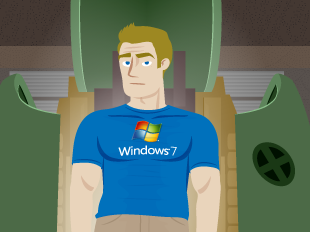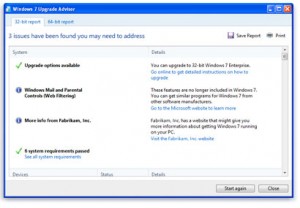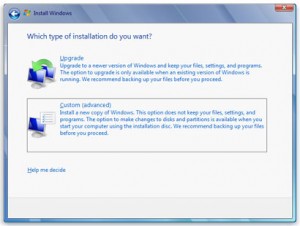| 我們致力本地化我們在盡可能多的語言的網站越好,然而這一頁是機器使用谷歌翻譯翻譯。 | 關閉 |
-
-
產品
-
資源
-
支援
-
公司
-
如何從XP升級到Windows 7的正確方法How to Upgrade from XP to Windows 7 the Right Way
通過 Steve Horton 五月 04, 2012upgrade, Windows 7, Windows XP沒有評論插圖: 戈登麥克阿爾平 就像美國隊長一樣,你也可以升級到更強大,更快速和更好的形式:從XP升級到Windows 7.我們將帶你完成將操作系統更新到最新操作系統所涉及的步驟。實際上,它非常簡單。 (您可能需要打印此頁面以供參考,因為您的PC將通過安裝多次重新啟動。)
- 運行Windows 7升級顧問 。此Windows XP應用程序將掃描您的PC並確定您是否可以有效地運行Windows 7。它甚至會建議您在升級之前解決可修復的升級和其他問題,並且還會告訴您某些應用程序或驅動程序是否會在Win 7下停止運行。
- 備份你的東西。 閱讀我們推薦的備份軟件。
- 轉移Microsoft Office等產品的許可證。您可能需要致電Microsoft來執行此操作。是的,我們不知道為什麼它仍然不是一個自動化過程。
- 將Windows 7 CD放入驅動器,但關閉出現的菜單。我們將進行完整安裝而不是升級。
升級顧問確定您的PC是否可以處理Windows 7。 - 了解如何輸入PC的BIOS,其中包含PC內置的設置。谷歌“製造商型號BIOS”做到這一點。例如,這台筆記本電腦是東芝Satellite L675。谷歌搜索“東芝Satellite L675 BIOS密鑰”告訴我,關鍵是F2。
- 在Windows徽標出現之前,通過重新啟動並按上面的鍵進入BIOS。將引導順序更改為先從CD / DVD引導,然後保存並退出。
- 您將看到Windows 7安裝屏幕。單擊立即安裝 。
- 在進行全新安裝時,單擊“自定義”而不是“升級”。
- 選擇您當前的驅動器(通常為C :)並選擇格式化。如果有空間,Windows將嘗試保存當前安裝,但並非總是如此。幸運的是,您之前運行了備份。
- 詢問時輸入產品密鑰。它配備了Windows 7,所以不要丟失它。
您的PC將在整個過程中重啟多次。完成所有操作後,請確保並運行Windows Update,以便使用最新版本的Windows 7.還可以下載並運行Driver Reviver ,以確保所有Windows 7驅動程序都是最新的。
請確保選擇“自定義”以進行完整安裝。 請享用!請放心,微軟將長期支持Windows 7。一段時間內無需擔心Windows 8。
視頻博客
這是一個交互式視頻博客,涵蓋從XP到Windows 7升級過程的升級。
Was this post helpful?YesNo
沒有找到答案?問一個問題向我們的專家社區來自世界各地,並得到在任何時間在所有的答案。most relevant 最近的文章 把它釘在 Pinterest 上



